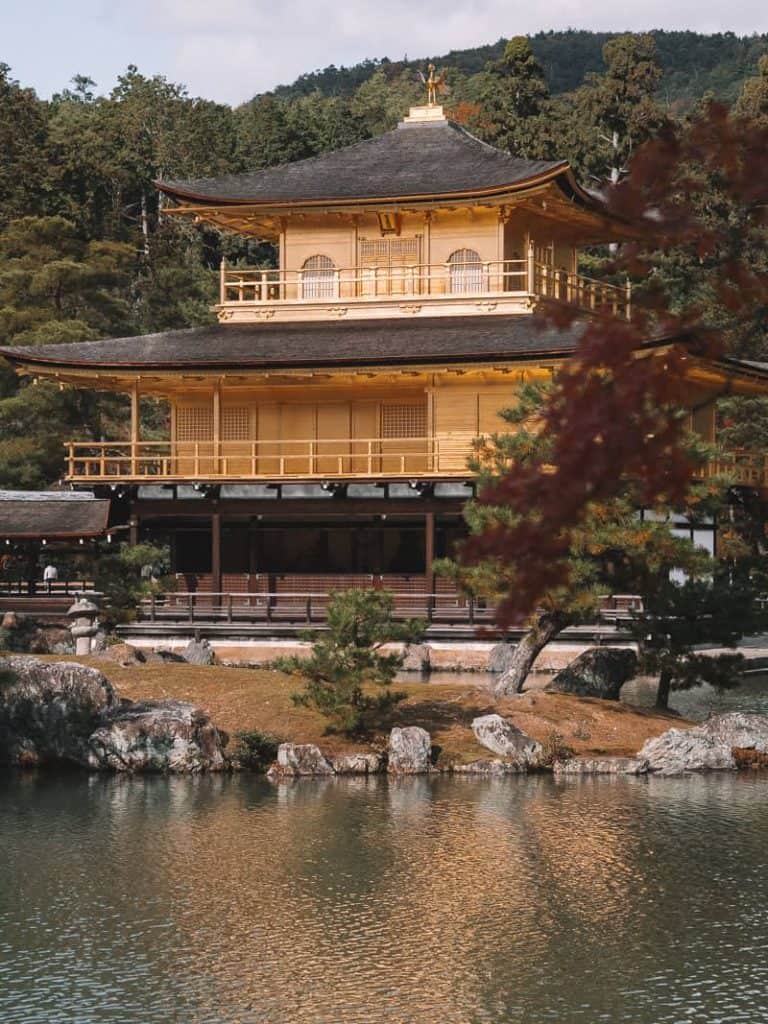Planning a week in Japan during Spring, Autumn, or another time of year is hardly enough time to see a destination that has so much to offer. But, if you are determined to see the best highlights of Japan in 7 days, then we’ve got the perfect itinerary for you! From Tokyo to Kyoto, here are 4 different options for your 7 days in Japan Itinerary.
We’re going to start off with a warning, if you plan to follow this Japan itinerary for 7 days, then you better be prepared – it’s a bit of a whirlwind!
Japan is much larger than most people realise, however, it is super easy to travel around. The country is well known for its fast and efficient rail network, which makes this 7 day Japan itinerary completely doable.
From Tokyo, to Kyoto, Hiroshima, and Osaka. We cover all the best places in Japan to visit for first timer visitors.
And if you would prefer to get off the beaten path or travel at a slower pace, then we’ve also got you covered with 3 alternative route options to suit every type of traveller.
Did You Know? We use ads and affiliate links on this website. When you click through and make a purchase, we may receive a small commission (at no extra cost to you), that helps us pay the bills to keep running this blog as a free resource. We only recommend products we use ourselves. If you’re planning to book a trip soon, please consider clicking through the links above, so that we can continue to provide free travel guides, just like this one! Please see our Disclosure Policy for more details.

In This Post:
Is 7 Days in Japan Enough Time?
The most common question people who are planning a trip to Japan ask is: “How many days in Japan is enough?”
If this is you, don’t stress. We’ll show you exactly what to do in Japan for a week, plus how to make the best use of your time experiencing Japan’s best highlights for first time visitors.
We have visited Japan a few times and have followed 9-day, 10-day and 14-day itineraries on separate occasions. But we know from experience that 7 days in Japan is totally doable.
Japan 7 Day Itinerary Map
This 7 day Japan itinerary map details 4 different routes, including our recommended Japan 1 week itinerary for first time visitors, plus 3 alternative options.
How to Spend a Week in Japan – At A Glance
This Japan travel itinerary starts and ends in Tokyo and ticks off several Japan bucket list items. Here’s a quick breakdown of our recommended Japan 7 day Itinerary:
- Day 1: Explore Tokyo
- Day 2: Tokyo to Kyoto
- Day 3: Kyoto & Nara
- Day 4: Kyoto & Arashiyama
- Day 5: Kyoto to Hiroshima
- Day 6: Hiroshima to Osaka
- Day 7: Osaka to Tokyo
How to Get Around Japan in 7 Days
Trains in Japan are the most convenient method of transport and the way we recommend getting around if you plan to follow this itinerary.
Japan Rail (JR) is the largest rail provider in the country and operates the Shinkansen (bullet train) between major cities. JR also operates local trains in major cities like Tokyo, Kyoto and Osaka.
As a tourist, you can purchase a Japan Rail Pass (JR Pass) that allows unlimited travel on Japan Rail lines for a set period. For this itinerary, we recommend purchasing a 7 day Japan Rail Pass!
You can choose between Ordinary Car (Second Class), or Green Car (First Class) if you wish to travel in a little more comfort.
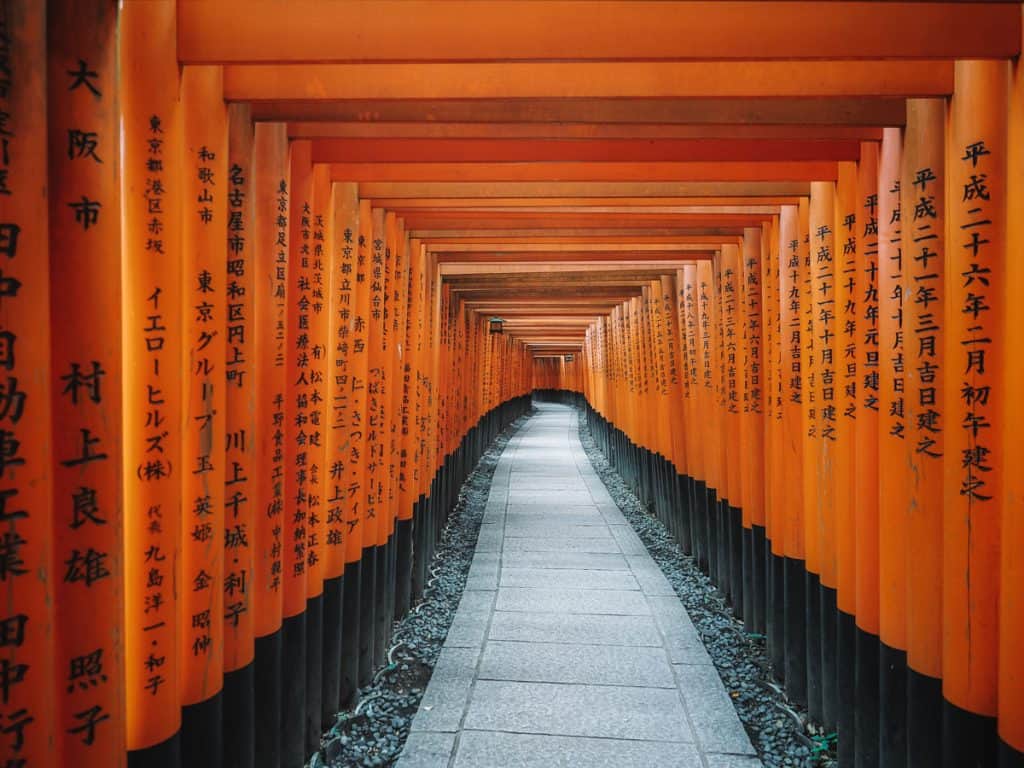
Tips to Prepare for Your Japan 1 Week Itinerary
Purchase a Japan Rail Pass before Arriving
The JR Pass must be purchased at least 2 weeks before arriving in Japan. A voucher will be mailed to your home address, and you’ll need to exchange this for a JR Pass at a Travel Service Center after arriving in Japan.
You cannot purchase a JR Pass after arriving in Japan.
Reserve Seats on the Shinkansen
Seats on Shinkansen trains can book out quickly during peak season. We recommend reserving seats for all Shinkansen trips you plan to take on this itinerary on your first day (as they can book out).
- Tokyo Station to Kyoto Station on day 2 (morning departure).
- Kyoto Station to Hiroshima Station on day 5 (morning departure).
- Hiroshima Station to Shin-Osaka Station on day 6 (morning departure).
- Shin-Osaka Station to Tokyo Station on day 7 (morning departure).
You’ll have to do this via a ticket machine (after receiving your JR Pass). Here is a list of the seat reservations you will need to make for this Japan trip itinerary:
Book Accommodation Early
Japan has become very popular in recent years and accommodation can book up quickly during certain times of the year.
We highly recommend booking your accommodation a few months before you arrive so you’re not disappointed.
We use and recommend Booking.com as they offer a free cancellation period on most hotels (just in case you want to change your hotel later).
Search for Accommodation near Train Stations
Booking accommodation as close as possible to a JR train station means avoiding the challenges of taking a taxi (you can read more about that and other tips for first time visitors here).
Booking.com has a handy map view feature to check the location of your hotel and usually lists the distance to the nearest train station in the hotel description. We have also listed some good accommodation options near train stations throughout this itinerary.

Pack Light
To maximise your one week in Japan you’ll be moving around a lot. After all, you will be covering 4 destinations in 7 days!
One of the best tips I received before our first time in Japan itinerary was to pack light. You’ll be wheeling (or carrying) bags around train stations, getting in and out of taxis, and the hotel rooms in Japan are much smaller than in most other countries. Go minimalist, Trust us!
Purchase a Japanese Sim Card
We recommend purchasing an unlimited 4G eSIM that can be used in Japan, such as this one. You will use your phone data a lot while navigating around this 7 day Japan itinerary, so you’ll want to save money on roaming costs.
Pick up an IC Card
While the JR Pass covers most train travel on JR Lines, there may be some occasions where you will need to use the Metro or bus lines (which are not covered by JR Pass).
We recommend picking up a SUICA or PASMO card from a ticket machine (or pre-purchase an ICOCA card here loaded with around 1500 Yen). Use this to touch on/off on the Metro and buses (some taxis even accept them).
Read More: 20 Things to Know Before Visiting Japan for the First Time
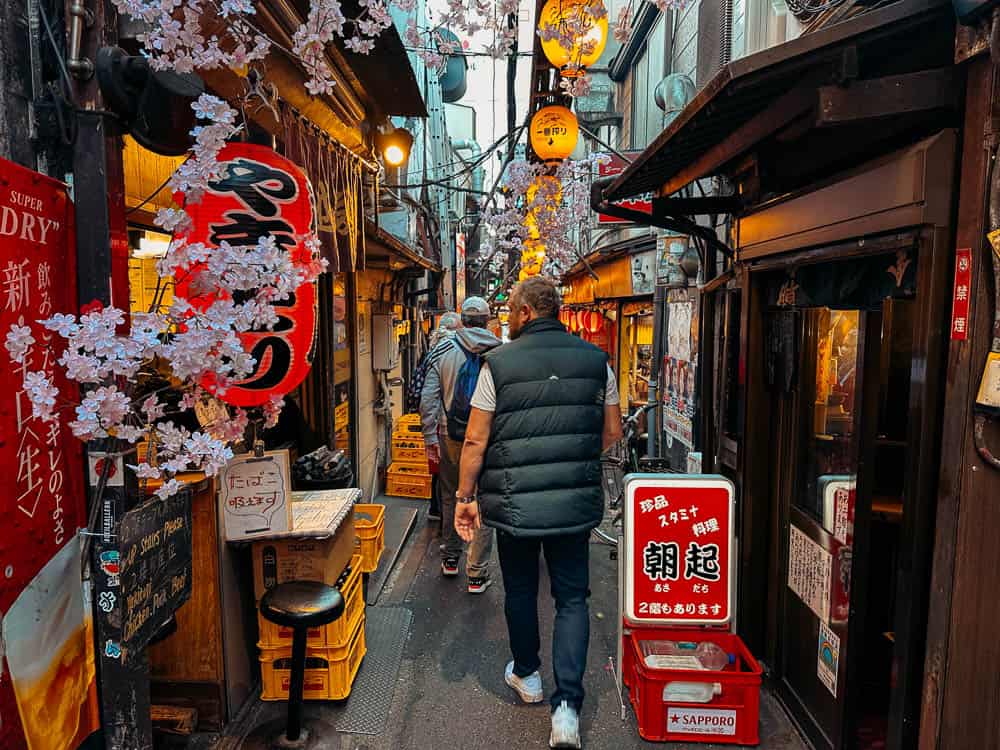
7 Day Japan Itinerary – In Detail
Day 1: Tokyo
Good to Know: You will need to exchange your JR coupon for a JR Pass before you can use JR train lines. We recommend doing this on the first day of your Japan itinerary for 7 days (or earlier if you arrive the day before starting this itinerary).
You’ll need to head to a JR East Travel Service Centre and show your passport, visa and exchange the voucher, and specify the date you would like the 7 days to commence. There is a Travel Service Centre located at Tokyo Station, Shinjuku Station, and Narita Airport Station.
Morning:
Hop on a JR train to Harajuku Station; wander around Meiji Jingu Shrine; then take a walk down vibrant Takeshita Street. Take a break in a cat cafe or hedgehog cafe; grab sushi or ramen for lunch before jumping back on the train and heading to Shibuya Station.
Afternoon:
Take a walk across the Shibuya Scramble; head up the Shibuya Sky and see the famous crossing from a birds-eye view.
Evening:
Catch the train to Shinjuku Station and make you way to Dotonbori; you’ll be amazed by the neon lights and vibe.
Wander down the cute laneway Omiode Yokocho and stop for some yakitori for dinner. Finish the evening with a drink at one of the tiny bars in Golden Gai.
If you’d prefer to explore Shinjuku on a guided tour, we recommend this evening food tour experience which covers all these spots and more.
Read More: How Many Days in Tokyo is Enough? 1-7 Days Itinerary
Where to Stay in Tokyo:
Tokyo is a large city, but we recommend staying near Tokyo Station or Shinbashi Station. It’s easy to get to other parts of Tokyo via JR train lines from Tokyo Station or Shinbashi Station, and this is also where the Shinkansen trains to your next destination will depart from.
- Budget – Nine Hours Ningyocho is a capsule hotel with modern amenities.
- Mid-range – Hotel Metropolitan Tokyo Marunouchi is within walking distance of Tokyo station.
- Splurge – The Four Seasons Hotel Tokyo at Marunouchi is one of the best hotels in Tokyo!

Day 2: Tokyo to Kyoto
Morning:
Reserve a seat on a morning Shinkansen departing from Tokyo Station or Shinbashi Station. This trip is covered by your JR Pass. You should arrive in Kyoto before lunchtime (approximately 3 hours).
Afternoon:
After checking into your hotel in Kyoto, head to the Higashimyama Ward and wander up the hill along the Ninnenzaka and Sannenzaka Paths. This is the traditional area in Kyoto and the streets are lined with beautiful shophouses.
Find a local Tea Room and enjoy a traditional Tea Ceremony; explore Kodai-ji Temple and Hokan-ji Temple.
Wander all the way up to Kiyomizu-dera temple which offers amazing sunset views over Kyoto city.
Evening:
Make your way back down the hill to Gion Corner; find a local eatery for dinner. If you’re lucky you might spot a Geisha or Maiko. Alternatively, hop on this evening Gion walking tour for a locals insight.
Where to Stay in Kyoto:
Accommodation in Kyoto is expensive. If you’re travelling on a budget then you’ll find the most cost-effective options near Kyoto Station.
However, if your budget will stretch, Downtown Kyoto offers great nightlife, or staying in the Higashiyama Ward will give you a taste of the traditional side of Kyoto.
- Budget – Piece Hostel Kyoto is located close to Kyoto Station.
- Mid-range – The Blossom Kyoto is a modern hotel located within walking distance from Kyoto Station and Downtown Kyoto.
- Splurge – The Park Hyatt Kyoto is located in the Higashiyama Ward, so you will need to take a taxi (or Metro) to get to/from Kyoto Station, but the experience of staying in this area is well worth the extra effort.
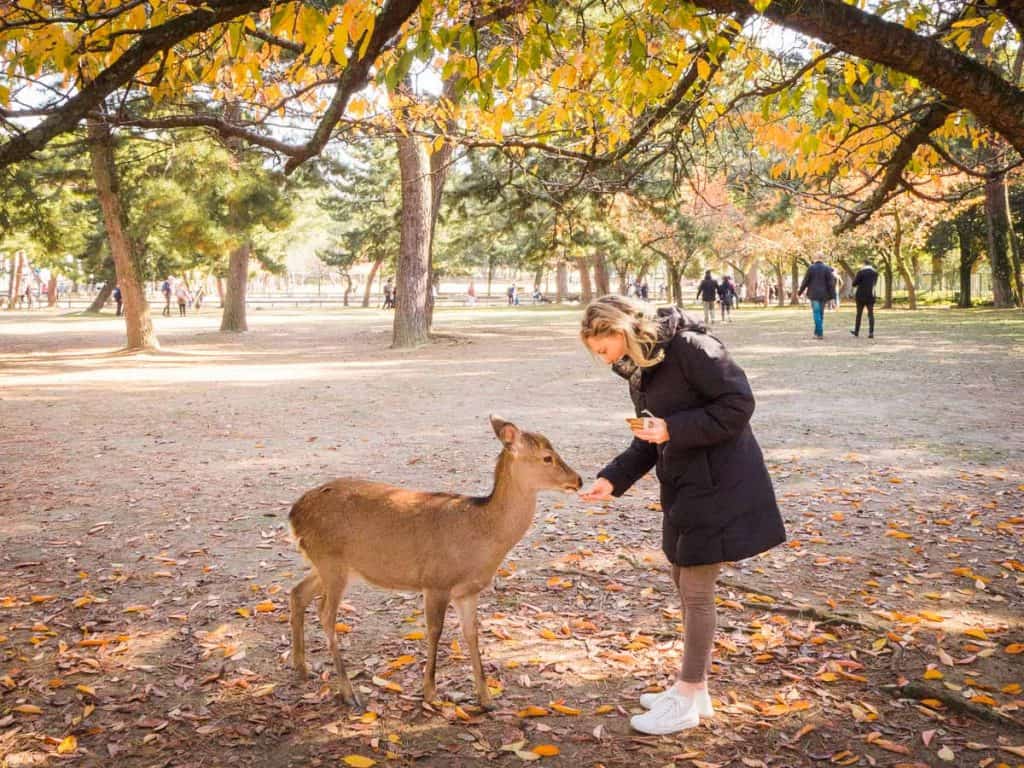
Day 3: Kyoto & Nara
Morning:
We recommend an early start to beat the crowds. Hop on the JR Nara Line at Kyoto Station and head to Inari Station. This is covered by your JR Pass and there is no need to make seat reservations on this train.
Wander through thousands of orange Torii Gates at Fushimi Inari Taisha. It’s free to visit and the path meanders up the mountain for 3km and the effort is well worth it for the view from the top.
Afternoon:
Hop back on the train and continue towards Nara Station (approximately 1 hour). Once you arrive, walk towards Todai-ji Temple and explore the Great Buddha Hall.
You can also feed the deer in the park; there are plenty of street vendors selling crackers or deer food (just beware they are wild animals and can be unpredictable, especially if they have fawns).
Evening:
Head to Downtown Kyoto for a bite to eat in the Pontocho Area or join an evening food tour.
Read More: 25 Top Things to Do in Kyoto
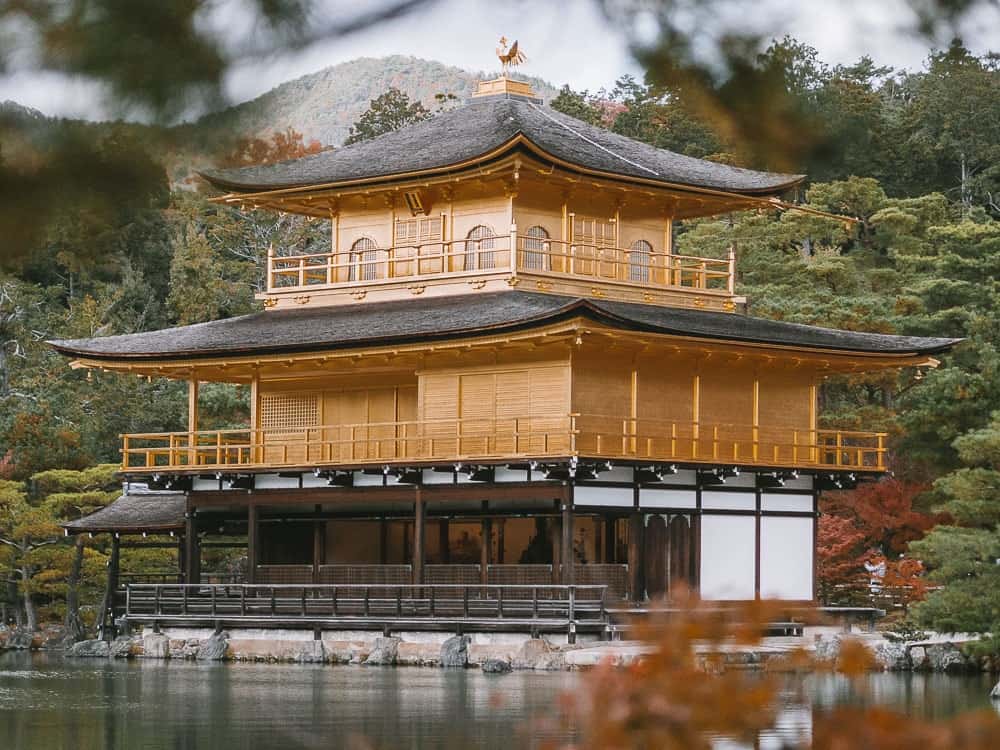
Day 4: Kyoto & Arashiyama
Morning:
Hop on the JR Sanin Main Line at Kyoto Station and head towards Saga-Arashiyama Station (covered by JR Pass, no seat reservation is needed on this train).
Walk towards the Arashiyama Bamboo Grove, near Tenryu-ji Temple. Spend some time exploring the beautiful forest; we recommend getting here early if you want photos without the crowds.
Wander across the Togetsu-kyo Bridge and up the hill to the Arashiyama Monkey Park.
Afternoon:
Hop on the metro (or take a taxi) to Ryoan-Ji Station and explore Ryoan-Ji Temple, Kyoto’s famous zen garden. From here, it’s a 20-minute walk or 4-minute taxi ride to Kinkaku-Ji (Golden Pavilion) which is a must-do in Kyoto.
Afterwards, take a taxi or bus back to Downtown Kyoto. Check out the bustling Nishiki Market and sample some Japanese delicacies.
Read More: The Perfect Kyoto 2 Day Itinerary

Day 5: Kyoto to Hiroshima
Morning:
Say goodbye to Kyoto and board the Shinkansen at Kyoto Station for Hiroshima (approximately 1 hour 40 minutes). It’s essential to reserve a seat for this train.
Once you arrive in Hiroshima, leave your luggage at your hotel or store it in a luggage locker at the station.
Catch the tram to Genbaku Dome-Mae Station (not covered by JR Pass). Make your way to the Hiroshima Peace Memorial Museum and learn all about the history of the Atomic Bomb dropped during WWII (this is one of our most highly recommended experiences in Japan!!).
For lunch, find a restaurant nearby that serves Okonomiyaki, a speciality dish from this region – you’ll find them literally everywhere in downtown Hiroshima.
Afternoon:
After lunch, spend some time wandering around the Peace Memorial Park and the Atomic Bomb Dome, before ending the day with a visit to Hiroshima Castle.
Where to Stay in Hiroshima:
- Budget – 36hostel is located within walking distance of the Atomic Bomb Dome and the Hiroshima Metro.
- Mid-range – The Knot Hiroshima is located in the downtown area close to the Hiroshima Peace Memorial Park.
- Splurge – Sheraton Grand Hiroshima is conveniently located right next to Hiroshima Station.

Day 6: Hiroshima to Osaka
Morning:
Check out of your hotel and board the Shinkansen for Shin-Osaka Station (approximately 1 hour and 20 minutes, covered by JR Pass).
On arrival, we recommend dropping your luggage at your hotel (or a luggage locker at the station) before heading to Osaka Castle, one of the most spectacular castles in Japan.
Spend a few hours exploring inside the castle and be sure to take a wander around the stunning Japanese gardens surrounding the castle.
Afternoon:
Head to Morinomiya Station and hop on the JR Osaka Loop Line to Imamiya Station, then change onto the JR Yamatoji Line to Namba Station (alternatively you can catch the Metro but it is not covered by JR Pass). From Namba, make your way on foot to Dotonbori and enjoy an afternoon shopping or take a boat cruise along the river.
Evening:
Take a wander through Dotonbori, down the vibrant laneways; don’t miss Hozenji Yokocho. Find a spot for dinner and be mesmerised by the neon lights of this modern city.
Where to Stay in Osaka:
- Budget – Imano Osaka Shinsaibashi Hostel is located within walking distance to Dotonbori and near the metro.
- Mid-range – Hotel Granvia Osaka is located within walking distance from Shin-Osaka Station
- Splurge – Hilton Osaka Hotel is located very close to Shin-Osaka Station.

Day 7: Osaka to Tokyo
Morning:
The last day of your 1 week in Japan itinerary will be at your leisure. Catch the Shinkansen back to Tokyo Station (approximately 2.5 hours). Reserve a morning Shinkansen departure if you have an early flight home, or want to explore a bit of Tokyo in the afternoon.
If you pick a seat on the left side of the train, you’ll be treated to a great view of Mount Fuji.
Afternoon:
If you want to explore some more of Tokyo in the afternoon, here are a few suggestions:
- Catch the Metro (not covered by JR Pass) to Asakusa Station and explore Senso-Ji Temple, go shopping for souvenirs along Nakamise Shopping Street, and then head to the Tokyo Skytree for an impressive view of the city.
- Enjoy some shopping at the boutiques around Ginza (walking distance from Tokyo Station).
- Visit the mesmerising teamLab Planets or teamLab Borderless and check out the digital art exhibition (tickets generally book out a few weeks ahead).
- Explore the Tokyo Imperial Palace (walking distance from Tokyo Station) and its beautiful East Gardens. Row a boat ride along the Chidorigafuchi Moat (a must-do during Sakura).
- Hop on JR Yamanote Line and head to Ueno Station. Explore Ueno Park; end the day wandering around Akiharaba, Tokyo’s “Electric City” and the centre of anime culture.
If you have extra days to spend in Tokyo, check out these 11 Day Trips from Tokyo!
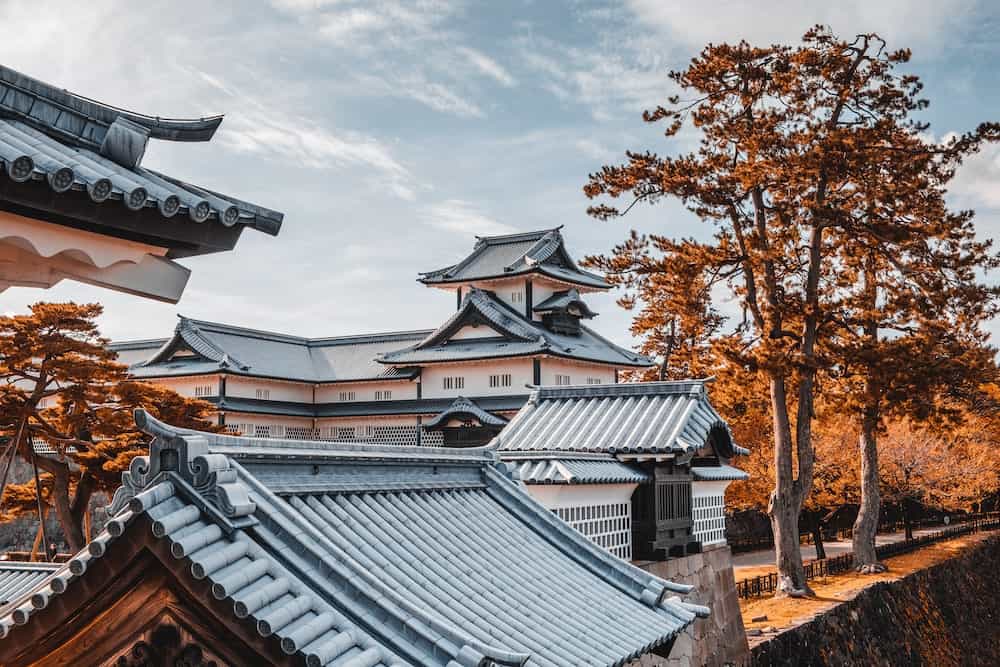
Alternative Japan Itineraries for 7 days
The itinerary above isn’t your only option for spending a week in Japan. There are a few alternative itineraries that would also work depending on your interests and how much you want to squeeze into your 7 days itinerary in Japan.
Alternative Route 1 (Must-See Places + Hidden Gems)
This option is perfect for travellers who want to see some of the best things in Japan but also prefer not to stick to the usual tourist route.
This alternative one week Japan itinerary includes a combination of the must-see destinations, plus a few lesser-visited ones. Be aware you may need to purchase additional train passes if you follow this itinerary, as some off-the-beaten-path destinations are not covered by the Japan Rail Pass.
Days 1-2: Tokyo
It is totally worth spending a few days exploring Tokyo. If you prefer to visit some less-tourist places in Tokyo, then we offer some good options in this Tokyo guide.
Day 3: Kanazawa
Kanazawa is a beautiful city that is slightly off the usual tourist route, but that’s why we love it so much. The best part is you can reach Kanazawa in 2.5 hours via Shinkansen from Tokyo!
Here you’ll find Kenroku-en, one of the best Japanese-style gardens in the whole country. Kanazawa Castle is also worth a visit, it’s almost as spectacular as Osaka Castle but with far fewer tourists.
Days 4-5: Kyoto
Although it’s a very popular tourist destination, we’ve still included Kyoto in this itinerary option, because it is arguably the most beautiful city in Japan and is totally worth a visit. There are so many temples and gardens in Tokyo that is actually very easy to find ones that are not on most tourists’ radar. Click here for our recommendations of things to do in Kyoto.
Days 6-7: Hakone
Hakone is one of our favourite destinations in Japan and is very easy to visit, as it’s located between Kyoto and Tokyo.
You can stay in Tokyo and visit Hakone on a day trip, however, we recommend spending the night in a traditional Ryokan to experience a side of Hakone that day trippers often miss out on. Click here for our full guide to visiting Hakone.
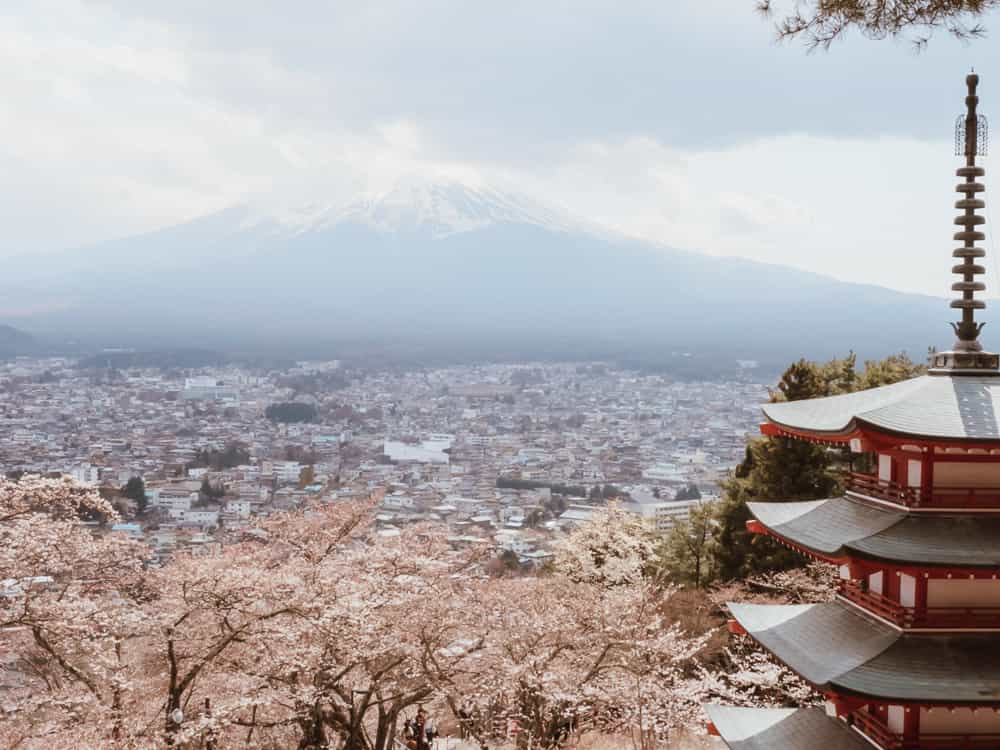
Alternative Route 2 (Slower-Paced Travel)
If you prefer to stay in 2 different destinations during your Japan 7 day itinerary (rather than 4), then we recommend spending 4 days in Tokyo and 3 days in Kyoto.
With this option, you will do more day trips, however, you won’t need to move your luggage around 4 different destinations in Japan in a week.
You can still use your Japan Rail Pass to get around both cities, as well as the Shinkansen between Tokyo and Kyoto.
Days 1-4: Tokyo
There are plenty of things to do in Tokyo that you can easily fill 4 days. Use our guide to plan what you want to do in Tokyo and where to stay.
There are also plenty of day trip options from Tokyo, which are covered by the Japan Rail Pass. We recommend taking a day trip to either Kamakura, Hakone, Nikko, or Mount Fuji.
Days 5-7: Kyoto
There are plenty of things to do in Kyoto for 3 days – check out our guide to the best things to do in Kyoto, or follow our Kyoto itinerary and explore the city for 2 days, then on your third day, take a day trip to either Osaka or Nara (both are covered by Japan Rail Pass).
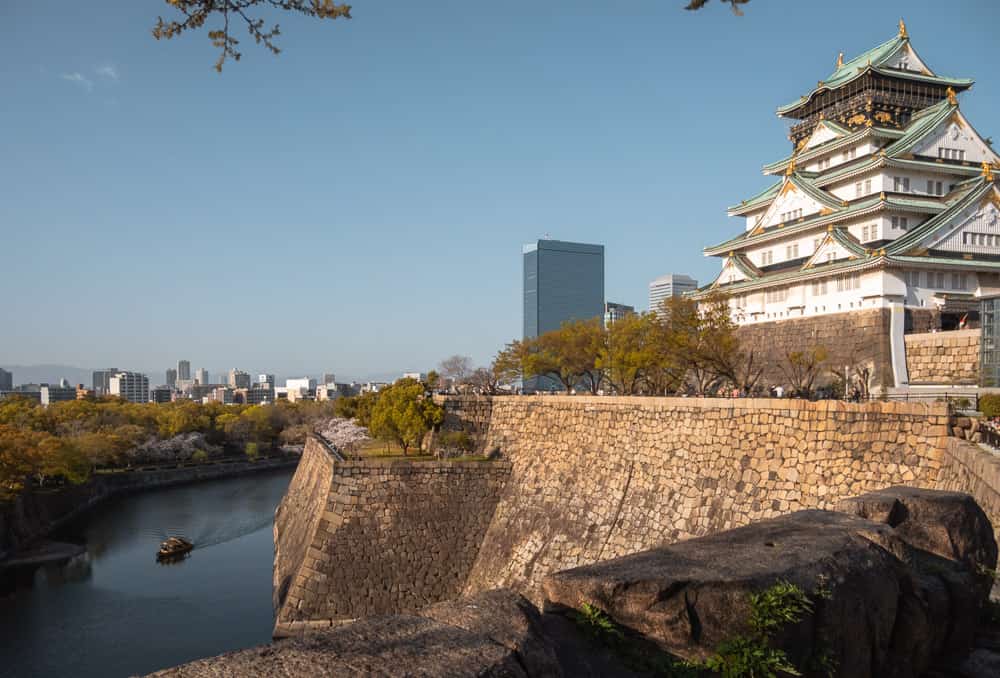
Alternative Route 3 (Starting/Finishing in Osaka)
Osaka is Japan’s third-largest city and you will often find cheaper flights arriving in Osaka, rather than in Tokyo.
Osaka is located very close to Kyoto and is a great place to start and finish your 1 week Japan itinerary. On this round-trip itinerary, you will spend 2 nights in Osaka, 2 nights in Tokyo, and 2-3 nights in Kyoto.
Day 1: Osaka
Osaka is a great city to visit, especially if you fancy yourself as a bit of a foodie traveller. Spend the first day exploring the spectacular Osaka Castle, take a river cruise, and eat your way around the vibrant Namba and Dotonbori areas.
Day 2: Day Trip to Hiroshima
For the second day, we recommend spending the night in Osaka and doing a day trip to Hiroshima. It’s only 1.5 hours via Shinkansen from Osaka to Hiroshima, and you can spend most of the day exploring the Hiroshima Peace Memorial Park, Museum and Hiroshima Castle.
Day 3-4: Tokyo
Take a Shinkansen from Osaka to Tokyo and spend a few nights exploring Japan’s largest city. We offer plenty of options for exploring Tokyo, plus a full itinerary in our Tokyo guide for you to follow.
Day 5-7: Kyoto
This Japan first time itinerary leaves the best for last. Kyoto is the most popular destination in Japan and you can spend 2 days exploring all the best spots in Kyoto.
We recommend staying in a traditional Ryokan for a true Kyoto experience.
Kyoto is located only a 20-minute train ride from Osaka, so it’s very easy to get back to Osaka Airport for your departing flight.
Ready to Plan Your Trip to Japan?
So, as you can see, it’s possible to experience the highlights of Japan in one week. We personally feel that spending 2 weeks in Japan is ideal and offers a more in-depth experience, however, 7 days is enough for a taste of Japanese culture.
We hope this first-time Japan itinerary has been helpful to you to plan your own trip, and that you’ve found a route option to suit your needs. For more information to help you plan your trip, check out our Ultimate Guide to Planning a Trip to Japan, and other Japan articles below.

